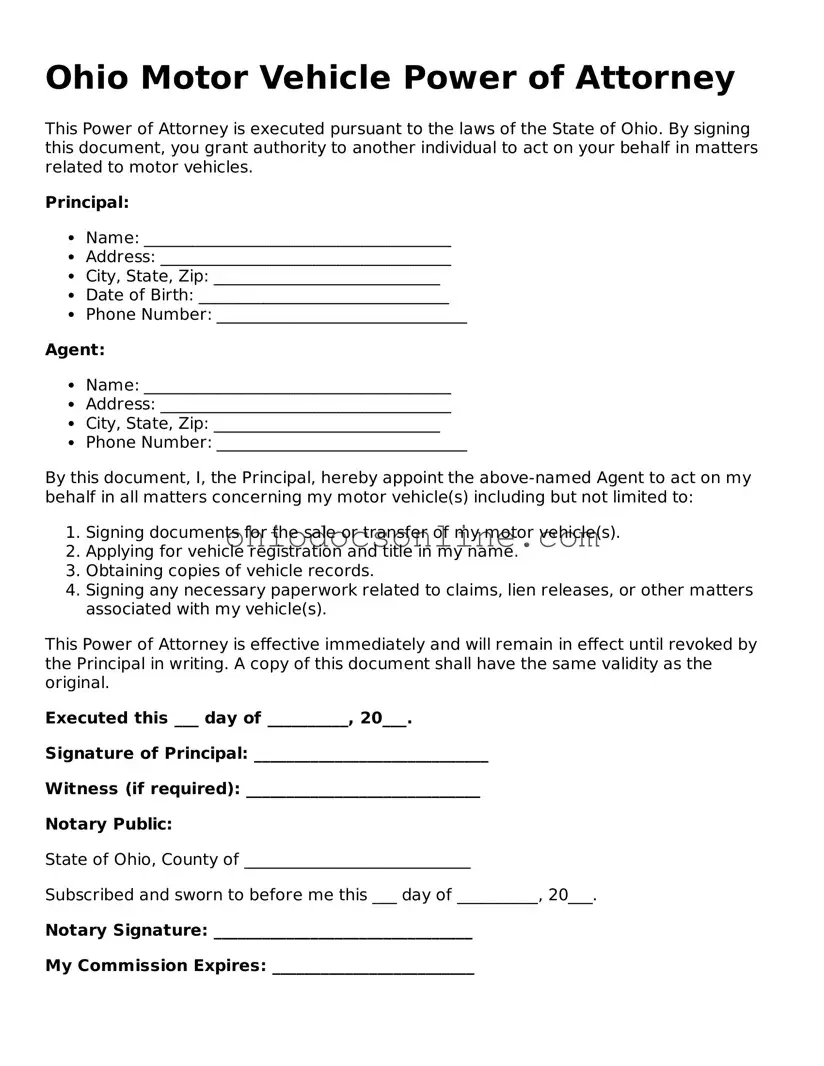Printable Motor Vehicle Power of Attorney Template for Ohio
The Ohio Motor Vehicle Power of Attorney form is a legal document that allows an individual to appoint another person to act on their behalf in matters related to motor vehicle transactions. This form is particularly useful for situations where the vehicle owner cannot be present to sign necessary paperwork. By granting this authority, the vehicle owner ensures that their interests are protected and that transactions can proceed smoothly.
Open Editor
